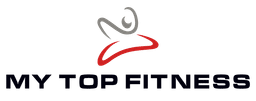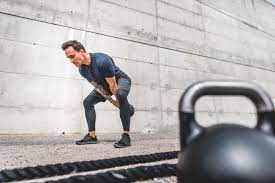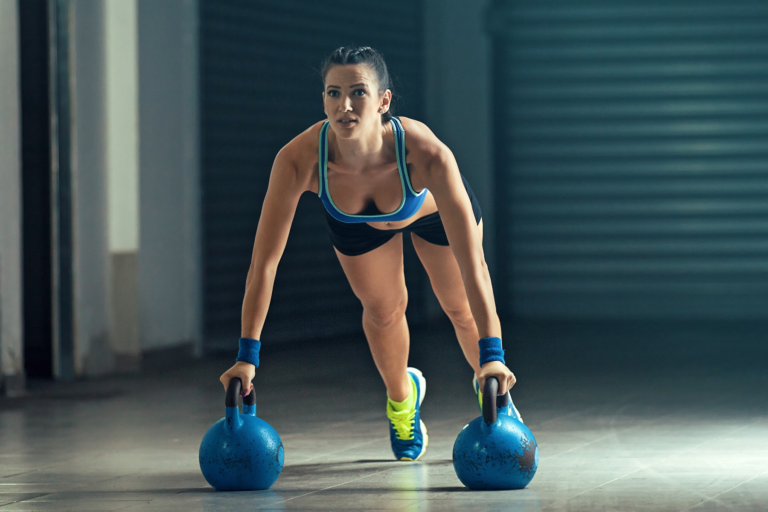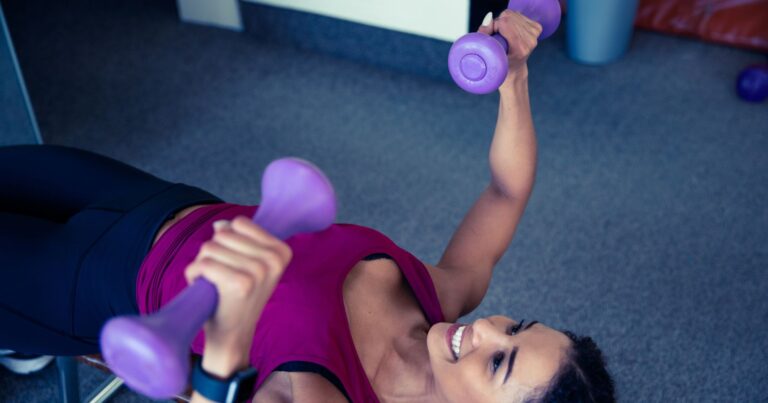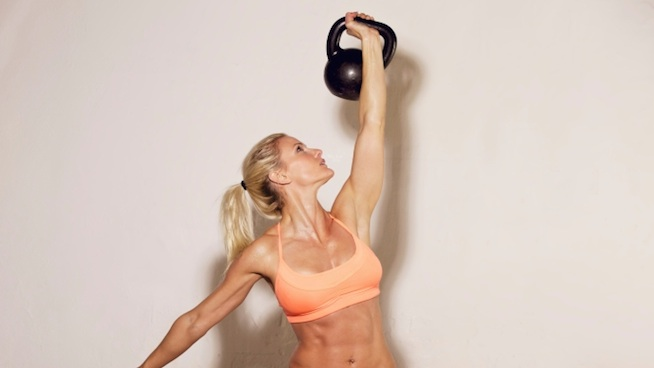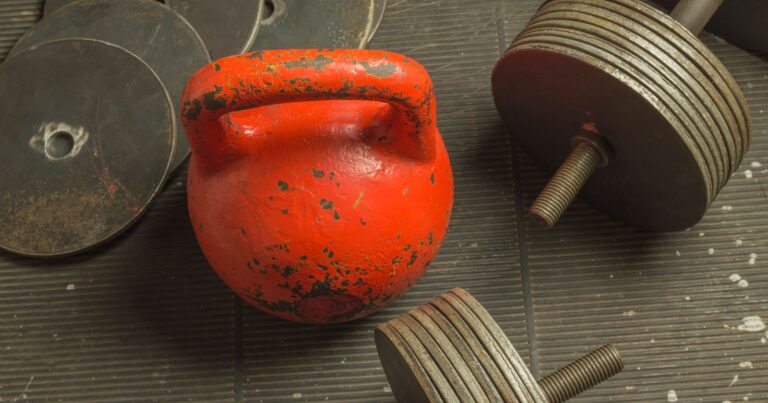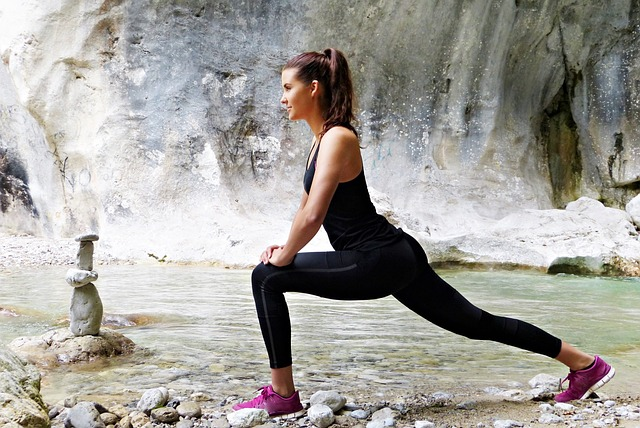Kettlebell Chest Workout: How To Train Your Pecs and Get Stronger Using a Pair of Kettlebells
Working the pectoral muscles is empirical to aid to correct posture, especially if you train your back a lot, but also to develop aesthetically pleasing shoulders and chest. Luckily, you don’t necessarily need a gym membership to train these core muscles, as you can achieve great results with as little as a few kettlebell exercises and pair of kettlebells.
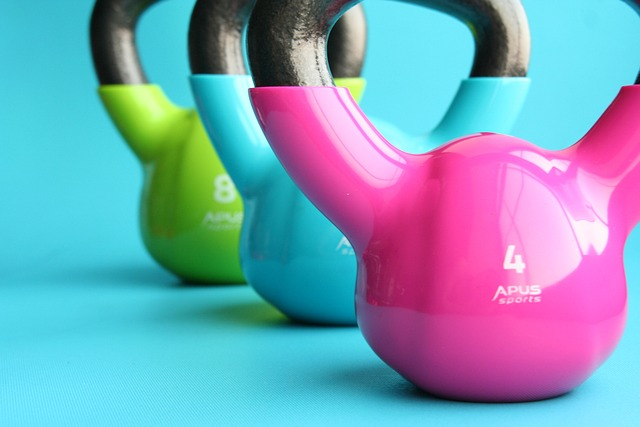
Kettlebell Chest Workout: 6 Exercises to Train Your Pecs
Below you can find a list of kettlebell workouts to train your chest that can be performed either in a gym or in the comfort of your home.
For the best results, aim to complete this workout a minimum of twice per week.
Floor Pullover
Technique
Lie on your back, holding a kettlebell with both hands
Extend your arms up to lift the kettlebell above your chest
Keeping the arms extended, move the kettlebell back behind your head
Gently return the kettlebell to the starting position. This is one repetition
Reps and Sets
Perform 10-12 repetitions for 4 sets
Single Arm Floor Chest Press
Technique
Lie down on your back, holding a kettlebell from the handle with one hand
Move the kettlebell to the side of your shoulder, with the palm facing the front
Extend the elbow to lift the kettlebell up above the chest
Bend the elbow and gently move the kettlebell down to the starting position. This is one repetition; repeat on both sides
Reps and Sets
Perform 12 repetitions on each side for 4 sets
Elevated Push Ups
Technique
Place yourself in an extended plank position using the kettlebells as parallettes. The kettlebells should be shoulder-width apart, and the hands should be positioned on the handles with the palms facing each other
Keeping your legs straight and the core engaged, bend the elbows to lower the body to the floor
Extend the elbows to move back onto an extended plank position. This is one repetition
Reps and Sets
Perform 8-12 repetitions for 4 sets
Standing Front Raise
Technique
Stand upright, holding a kettlebell in one hand
Lower the arm down the side, with the palm facing the front
Keeping the arm extended, lift the kettlebell to chest height
Gently lower the kettlebell down to the side. This is one repetition; repeat on both sides
Reps and Sets
Perform 12 repetitions on each side for 4 sets
Decline Floor Press
Technique
Lie on the floor, holding a kettlebell in each hand.
Keep your knees bent and lift the glutes to get onto a glute bridge position
Holding the glute bridge position, move the kettlebells next to the shoulders, with the palms facing forward
Extend the elbows to lift the kettlebells above your chest
Bend the elbows to lower the kettlebells back to the starting position. This is one repetition
Reps and Sets
Perform 10-12 repetitions for 4 sets
Floor Flys
Technique
Lie down on your back, holding a kettlebell in each hand
Open the arms out to the sides so that they are in line with the shoulders. At this point, the palms should be facing up
Keeping the arms extended, lift the arms towards the center of your body until they are in line with your pectorals
Gently lower the kettlebells down to the starting position, maintaining the elbows extended. This is one repetition
Reps and Sets
Perform 10-12 repetitions for 4 sets
Need a rack to store your kettlebells? You should check out our in-depth comparison of the best kettlebell racks here.
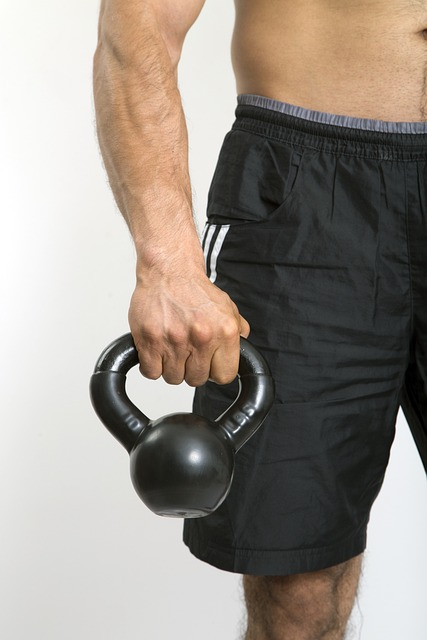
The Function of the Chest Muscles
The chest muscles are responsible for a range of actions and functions, depending on the specific muscle group. Primary chest muscles facilitate breathing, posture, movement, and stability. The chest muscles support the ribcage during inhalation and exhalation, and they also assist in respiratory expansion.
Additionally, they help to stabilize the shoulder girdle, as well as to move and rotate the arm. Chest muscles can be used for pushing, pulling, and lifting exercises that involve a variety of different motions and positions. Working out with chest exercises can help to improve overall strength and power, develop better posture, reduce the risk of injury, and improve athletic performance. Finally, chest exercise routines are often used to build and strengthen the chest muscles for aesthetic purposes.
When working out the chest, it is important to use proper form and technique (such as having your shoulder blades pulled back and your feet flat on the ground) in your chest workouts in order to maximize results and minimize the risk of injury. Make sure that you are engaging the right muscles during each exercise, using a full range of motion, and taking appropriate rest periods between sets. With practice and consistency during chest workouts, you can build and strengthen your upper chest muscles and improve overall fitness.
Additionally, proper stretching is important for any chest workout. Stretching helps to increase flexibility and range of motion, reduce muscle tension and soreness, and improve recovery time. Make sure to take the time to properly warm up and stretch before beginning any workout routine. Stretching can help to prevent injury, ensure proper form, and maximize your results.
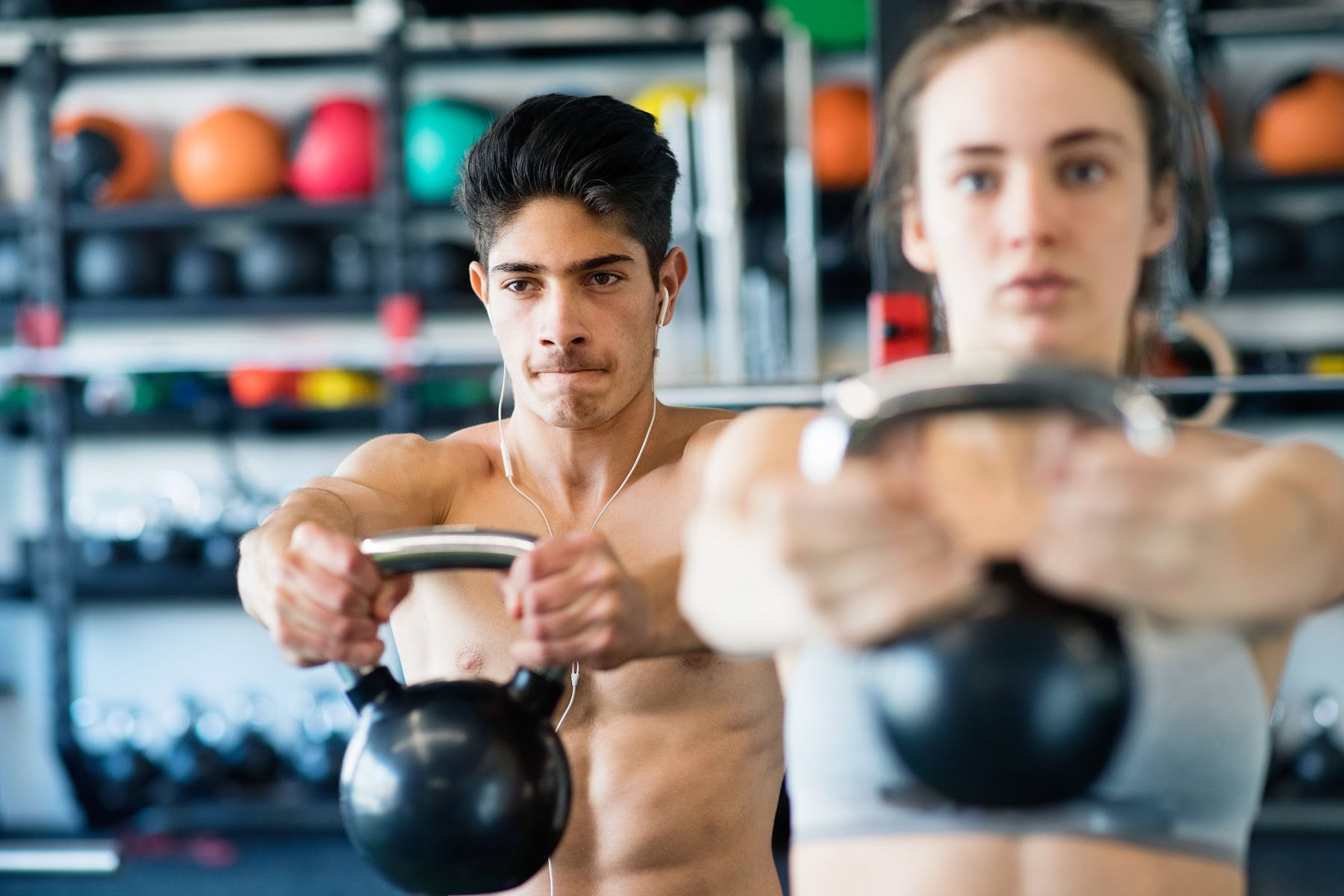
Are Kettlebell Chest Exercises Beneficial?
Kettlebell chest exercises are a great way to mix up your strength training routine and target the muscles in your chest. It is one of the most versatile pieces of equipment, so it can be used to do many different types of exercises. Similar to dumbbell exercises, kettlebell chest exercises help build muscle and strength in your pecs while also burning extra calories.
These movements can be done with high reps for endurance or low reps for power and strength building. You can choose from various moves such as push-ups, bent-over rows, presses, flyes, pullovers, and more.
One benefit of kettlebell chest exercises is that they use multiple muscles at once, so you are getting more bang for your buck when it comes to working out these particular areas. The motion used for many of these exercises involves a combination of pushing and pulling motions, which can help increase overall strength, balance, and stability.
Kettlebell chest exercises are also great for developing muscular endurance in your pecs. This type of exercise requires repeated movements to be done over a longer period of time without much rest in between sets. So when you do a kettlebell chest press workout regularly, you will build up your tolerance and be able to lift heavier weights with greater ease.
Kettlebell Floor Chest Press
The Kettlebell Floor Press is an effective exercise used to strengthen the chest muscles. It involves lying on the ground and pressing a kettlebell up and down in a controlled manner. The exercise utilizes both pushing and pulling motions, which engages multiple muscle groups at once. This makes it a great full-body exercise for building strength and stability. Additionally, it develops muscular endurance and helps to improve overall fitness.
This kettlebell chest exercise is a powerful workout that can help you take your fitness to the next level. This exercise is perfect for anyone looking to improve their overall strength, stability, and endurance. The controlled movements involved in the floor press engage multiple muscle groups at once, making it an excellent full-body exercise.
One of the key benefits of this kettlebell chest press workout is that it strengthens the chest muscles. This is important because a strong chest is essential for performing many everyday activities, such as pushing or pulling heavy objects. The exercise also engages other muscles in the upper body, including the shoulders and triceps.
In addition to building strength, this type of kettlebell chest press also helps to develop muscular endurance. This means that you’ll be able to perform physical activities for longer periods without getting tired. This can be especially beneficial if you’re an athlete or someone who enjoys high-intensity workouts.
Another benefit of this exercise is that it helps to improve overall fitness. By engaging multiple muscle groups at once, the Kettlebell Floor Press provides a challenging workout that can help you burn calories and build lean muscle mass. It’s also a great way to increase your heart rate and improve cardiovascular health.
Overall, if you’re looking for an effective full-body workout that will build strength, stability, and endurance, look no further than the Kettlebell Floor Press. Incorporate this powerful kettlebell training into your routine today and start seeing results!
Rep Schemes for Kettlebell Exercises
When it comes to rep schemes for kettlebell training and kettlebell workouts themselves, there is no one-size-fits-all approach. The number of reps and sets will depend on individual goals and fitness level. For general strength building, a moderate rep range of 8-12 repetitions with 3-4 sets is recommended.
This can be used for both upper and lower-body kettlebell exercises, including chest exercises. For endurance training, focus on higher rep ranges of 15-20 repetitions with 3-4 sets. If you are looking to build muscle and strength, increase the weight and use a lower rep range of 4-6 reps per set.
Time Under Tension
Time under tension (TUT) is an important concept in strength training and can be used to maximize results from exercise. By increasing TUT, a muscle is placed under more strain for an extended period of time, which can help to increase muscle strength and size.
To achieve this, focus on slowly performing each repetition with a full range of motion. For example, when performing the Kettlebell Floor Chest Press, make sure to take at least 2-3 seconds for each phase of the exercise: lowering and raising the kettlebells.
Kettlebell Fly Press
The Kettlebell Fly Press is a great exercise for building strength and size in the chest muscles. This exercise utilizes both pressing and fly motions to target multiple muscle groups, resulting in greater gains in overall fitness.
One of the key benefits of the Kettlebell Fly Press is that it targets both the pectoralis major and minor muscles in the chest. These are two of the largest muscle groups in the upper body, and they play an important role in many everyday activities, such as pushing or lifting heavy objects. By strengthening these muscles through regular exercise, you can improve your overall functional fitness.
Another benefit of this kettlebell training exercise is that it engages other muscles in the upper body, including the shoulders and triceps. This means that you’ll be working multiple muscle groups at once, resulting in a more efficient workout. Additionally, by targeting these additional muscles via chest presses, you’ll be able to build greater overall strength and stability.
The Kettlebell Fly Press also helps to improve muscular endurance. By performing this kettlebell chest exercise regularly, you can build up your ability to perform physical activities for longer periods without getting tired. This can be especially beneficial if you’re an athlete or someone who enjoys high-intensity workouts.
Progressive Overload during Kettlebell Training
Progressive overload is an important concept in strength training that involves continually increasing the difficulty of workouts to ensure continued progress. This can be achieved by gradually increasing weight, reps, sets, time under tension, or any combination of these.
Increasing the intensity of your workout can help to build strength, muscle size, and endurance. Additionally, it helps to activate more muscle fibers which can lead to greater gains in overall fitness.
One way to achieve progressive overload with kettlebells is by increasing the weight used in your workouts. As you become stronger and more accustomed to a particular weight, you can gradually increase it to continue challenging your muscles. Kettlebells come in a wide range of weights, so there’s always room for progression as you get stronger.
Another way to achieve progressive overload with kettlebells is by changing up the kettlebell training exercises themselves (such as moving from a bench press to a kettlebell swing, etc.). There are many different kettlebell exercises that target different muscle groups and movement patterns. By incorporating new exercises into your routine or modifying existing ones, you can keep your workouts fresh and challenging.
You can also achieve progressive overload with kettlebells by adjusting the number of reps and sets performed for each exercise. For example, if you’re currently doing three sets of 10 reps for a particular exercise, you could try increasing the number of sets or reps to continue challenging yourself.
Finally, another way to achieve progressive overload with kettlebells is by manipulating rest periods between sets or exercises. By shortening rest periods or performing supersets (where two exercises are performed back-to-back without rest), you can increase the intensity and challenge your muscles in new ways.
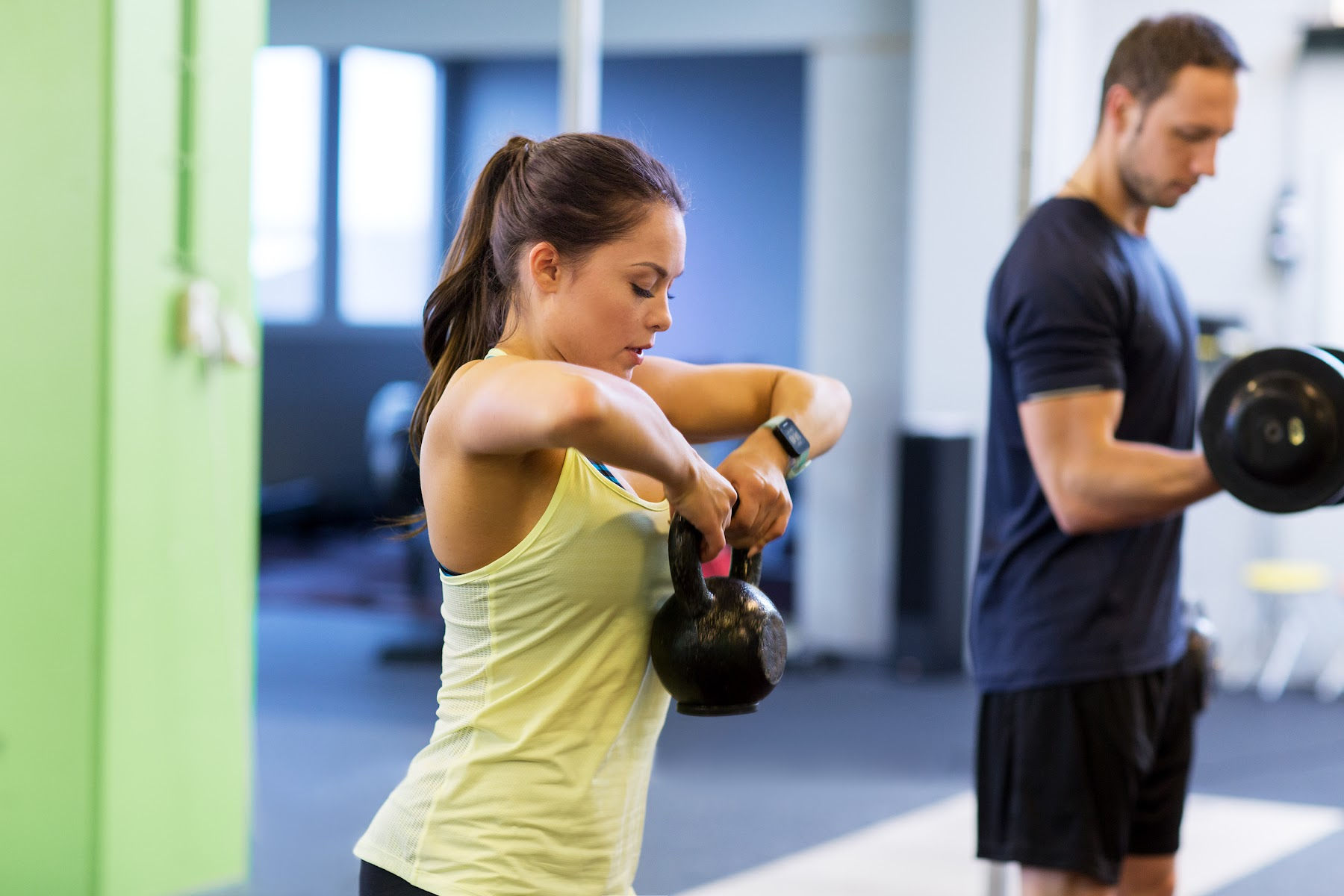
Kettlebell Pushup (hands-on KB)
This is a great kettlebell chest workout for building muscle and strength in the upper body because they allow you to go deeper than regular push-ups. This exercise combines pushing and pulling motions to engage multiple muscle groups, resulting in improved strength, size, and stability. Note that you will need two kettlebells for this exercise, one for each hand as you assume the push-up position.
If you’re looking for a challenging and effective kettlebell exercise to add to your routine, the kettlebell push-up is definitely worth considering. This exercise is an excellent way to build muscle and strength in the upper body while also improving overall stability.
One of the key benefits of this kettlebell chest exercise is that it allows you to go deeper than regular push-ups. By placing your hands on two kettlebells instead of on the ground, you can lower yourself further down toward the floor. This increased range of motion engages more muscle fibers in the chest, shoulders, and arms, resulting in greater gains in strength and size.
Another benefit of kettlebell push-ups is that it combines pushing and pulling motions to engage multiple muscle groups at once. As you lower yourself toward the floor in the push-up position, you’ll be engaging your chest muscles through a pushing motion. Then, as you raise yourself back up towards starting position, you’ll be engaging your back muscles through a pulling motion. This dual engagement results in improved overall strength and stability.
The kettlebell push-up can also be modified to increase or decrease difficulty based on your fitness level. For example, if you’re just starting out with this exercise, you can perform it with your knees on the ground instead of straightening out your legs. Conversely, if you want to make it more challenging, you can place your feet on an incline bench or box while performing the exercise.
Building Strength vs. Muscle with Kettlebell Exercises
Develop a comprehensive strength training program that effectively targets the chest and core muscles for improved gains in overall fitness, including increasing weight, reps, sets, and time under tension. To maximize results, focus on gradually increasing the intensity of your chest workouts.
Additionally, incorporate other chest exercises that combine pushing and pulling motions to engage multiple muscle groups, resulting in improved strength, size, and stability. Lastly, ensure that you are performing each repetition with a full range of motion and a slow tempo to increase time under tension (TUT).
One Arm Kettlebell Push Up
The One Arm Kettlebell Push Up is an advanced chest exercise that will help to develop strength, size, and stability in the chest. This exercise can help to improve overall strength and stability while engaging multiple muscle groups in the chest and arms. In addition to building muscle, it can also help to increase endurance, allowing you to perform more repetitions and sets for better results.
Kettlebell Pullover
The Kettlebell Pullover is an effective full-body exercise that targets the chest and arms while engaging the core and upper back muscles. It requires just a single kettlebell and can be performed while lying on an exercise mat or weight bench.
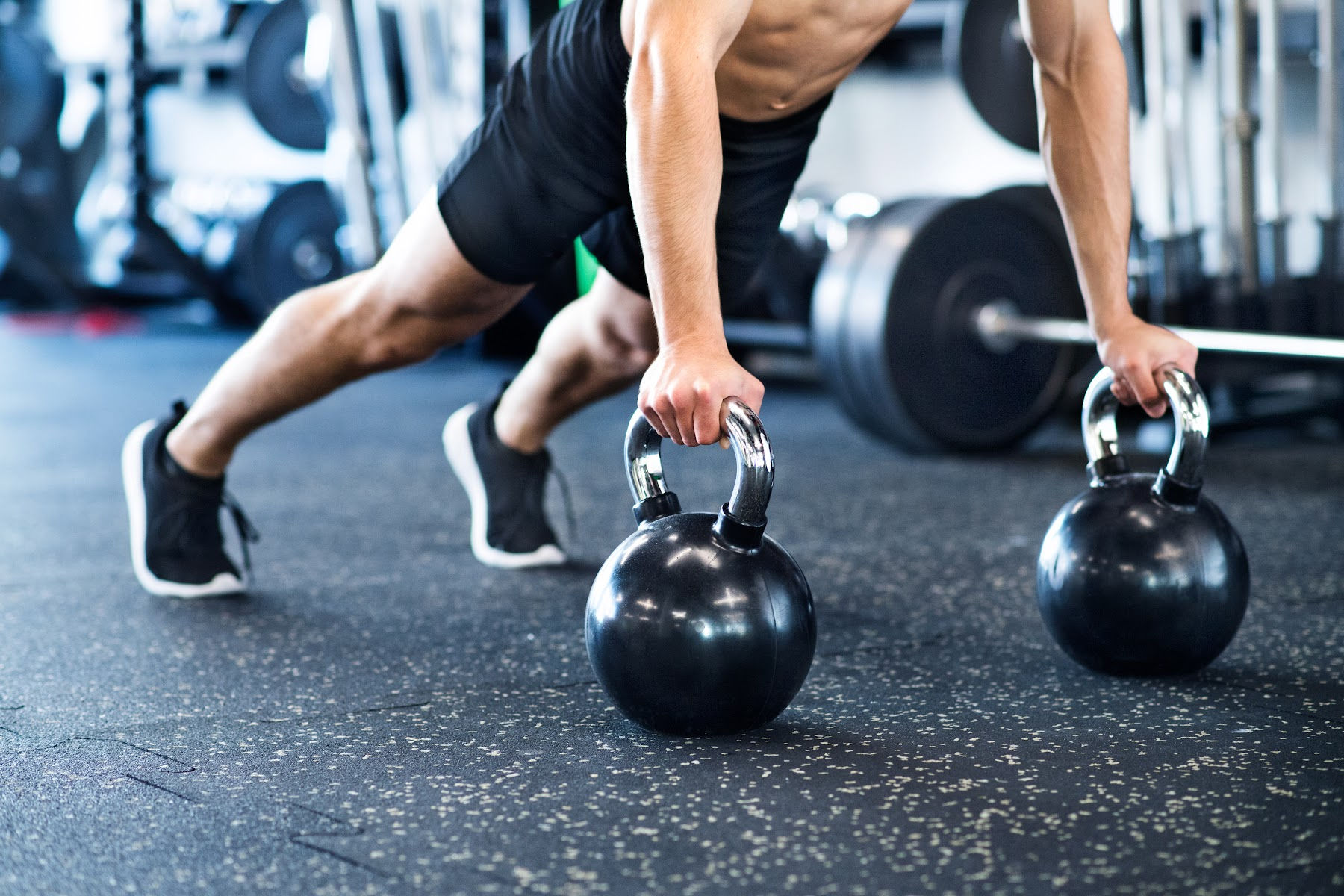
Single Arm Kettlebell Front Raise
The Single Arm Kettlebell Front Raise is an effective exercise for building strength and muscle mass in the shoulders, arms, and upper chest. It requires one kettlebell and can be performed while standing or seated.
Are Kettlebells Effective For Training the Chest?
Kettlebells are indeed an effective tool for training the chest. They provide a unique challenge that is not possible with traditional dumbbells and barbells, as the shape of the kettlebell allows for a greater range of motion that can engage both the chest and shoulder muscles from different angles.
Additionally, because you’re working with two kettlebells (or separate weights), you can perform unilateral kettlebell exercises that target one side at a time. With the proper form and reps, kettlebell chest exercises can build strength, muscle mass, and stability in your chest. If you require a workout with more advanced movements, set your feet shoulder-width apart or wider.
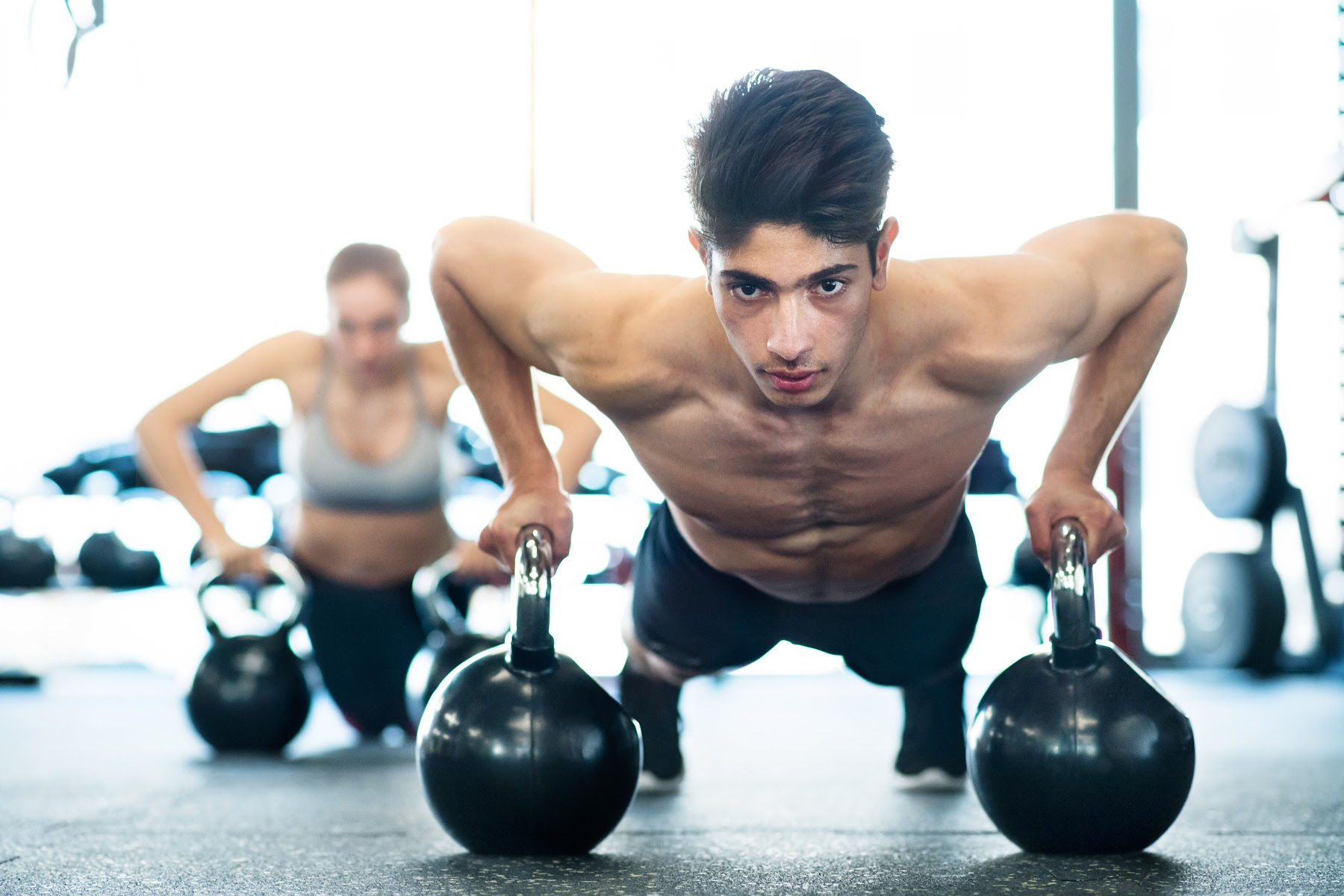
The Final Swing: Kettlebell Exercises are Totally Worth it!
By incorporating any of these kettlebell chest workouts into your training routine, you can effectively target the chest muscles while getting rid of excess body fat and building strength, size, and stability. Ensure that you are performing each repetition with a full range of motion and a slow tempo to increase time under tension (TUT), ultimately maximizing muscle growth potential.
Additionally, keep in mind that proper form and technique (remember, shoulder blades pulled back, knees bent, feet shoulder-width apart, etc.) should always be prioritized over increasing the weight or number of repetitions in your kettlebell workouts. Take your time and focus on each movement, then gradually increase the intensity as you progress. With dedication and consistency, you will start to see noticeable improvements in the strength, size, and stability of your chest muscles. Good luck!
